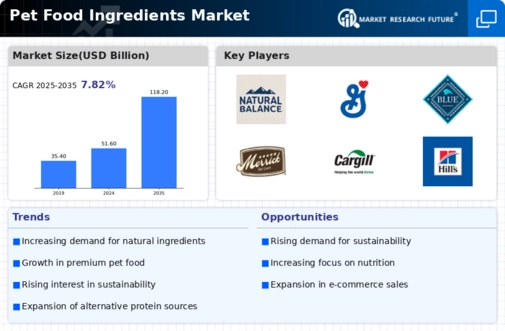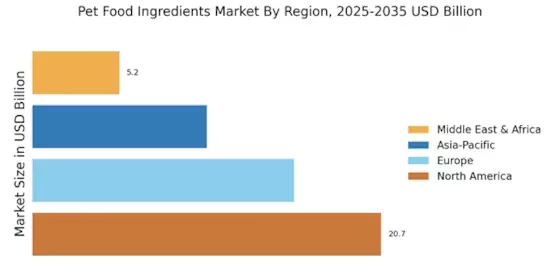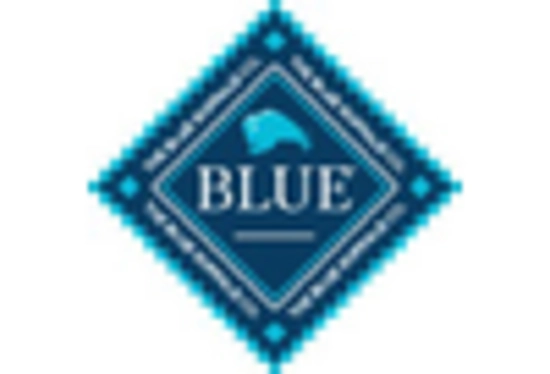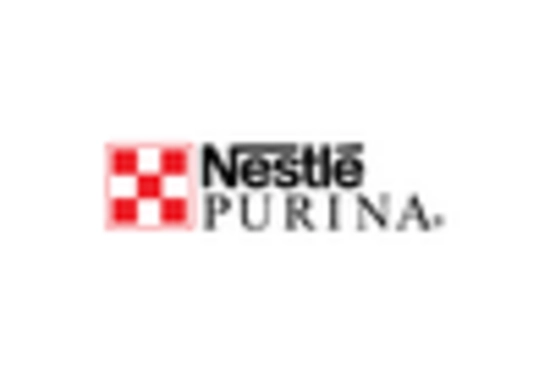The Pet Food Ingredients Market is currently characterized by a dynamic competitive landscape, driven by increasing consumer demand for high-quality, nutritious pet food. Key players are actively engaging in strategies that emphasize innovation, sustainability, and regional expansion. Notably, companies such as Nestle Purina PetCare (US) and Mars Petcare (US) are focusing on product diversification and premium offerings to capture a larger market share. Their operational focus on enhancing ingredient quality and transparency appears to resonate well with health-conscious pet owners, thereby shaping a competitive environment that prioritizes quality over cost.
In terms of business tactics, many companies are localizing manufacturing to reduce supply chain vulnerabilities and enhance responsiveness to regional market demands. The market structure is moderately fragmented, with several key players exerting considerable influence. This fragmentation allows for niche players to thrive, while larger corporations leverage economies of scale to optimize their supply chains and distribution networks, thus enhancing their competitive positioning.
In August 2025, Hill's Pet Nutrition (US) announced a partnership with a leading agricultural technology firm to develop sustainable sourcing practices for its ingredients. This strategic move underscores Hill's commitment to sustainability and aligns with growing consumer preferences for environmentally responsible products. By integrating advanced agricultural practices, Hill's aims to enhance the quality of its pet food while reducing its environmental footprint, which could potentially strengthen its market position.
In September 2025, Royal Canin (FR) launched a new line of breed-specific pet food that incorporates innovative ingredients tailored to the unique nutritional needs of different breeds. This initiative not only reflects Royal Canin's dedication to research and development but also highlights the increasing trend towards personalized pet nutrition. Such targeted offerings may enhance customer loyalty and differentiate Royal Canin in a competitive market.
Moreover, in July 2025, Champion Petfoods (CA) expanded its distribution network in Asia, focusing on the growing demand for premium pet food in that region. This strategic expansion is indicative of Champion's intent to capitalize on emerging markets, which could provide substantial growth opportunities. By establishing a stronger presence in Asia, Champion Petfoods may enhance its competitive edge and drive revenue growth in the coming years.
As of October 2025, the competitive trends in the Pet Food Ingredients Market are increasingly defined by digitalization, sustainability, and the integration of artificial intelligence in product development and supply chain management. Strategic alliances are becoming more prevalent, as companies seek to leverage complementary strengths to enhance their market offerings. Looking ahead, it appears that competitive differentiation will increasingly pivot from price-based strategies to innovation, technological advancements, and reliable supply chains, reflecting a broader shift in consumer expectations and market dynamics.


















Leave a Comment